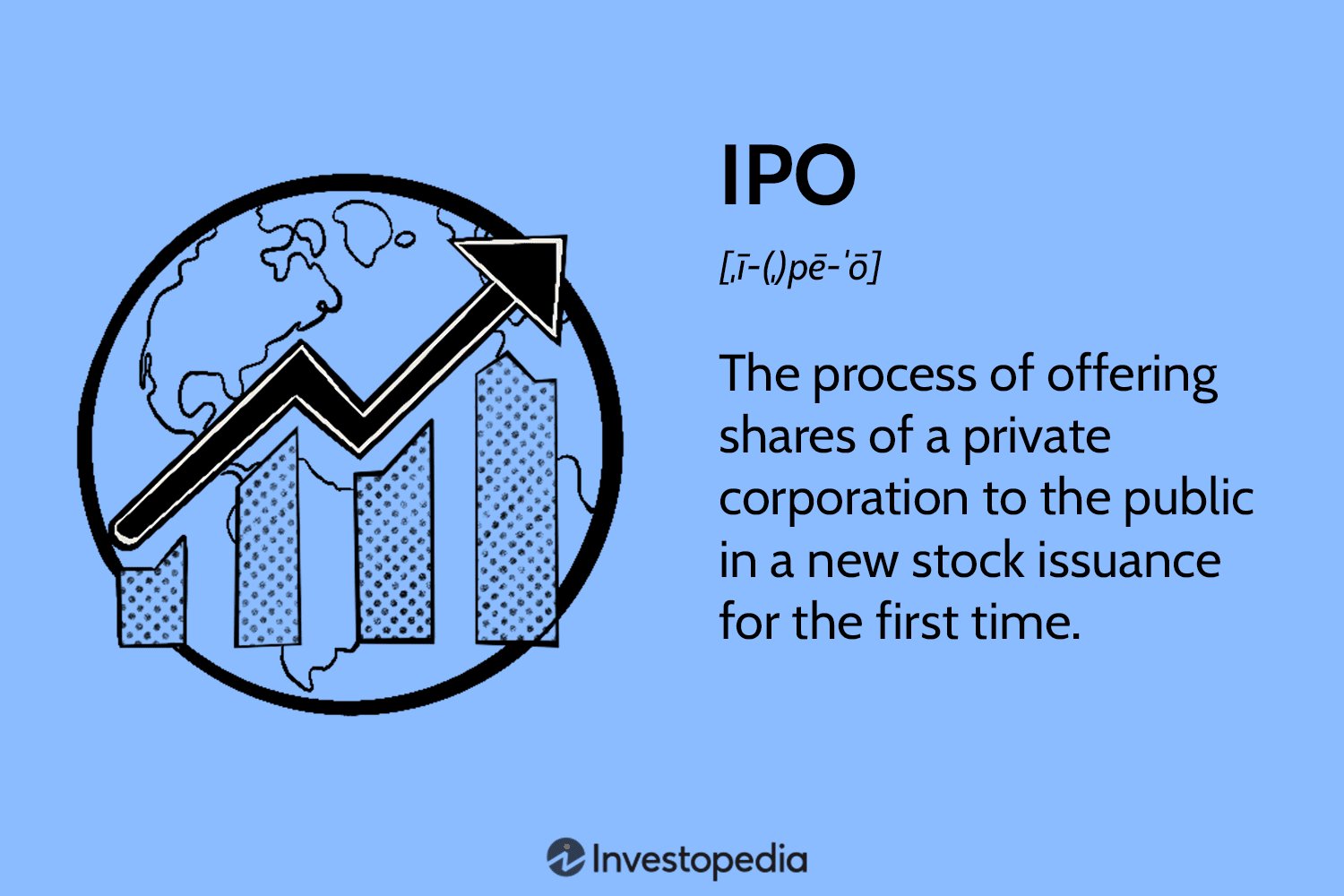If you’ve ever wondered about the ins and outs of IPO pricing and its impact, you’re not alone. Understanding IPO pricing and its impact is crucial for both investors and companies looking to go public. In this blog article, we will delve into the intricacies of IPO pricing, demystify the process, and shed light on its significance. So, whether you’re a curious investor or a business owner considering an IPO, this article is for you. Let’s dive right in and explore the fascinating world of IPO pricing and its impact.
Understanding IPO Pricing and Its Impact
IPOs, or Initial Public Offerings, are significant events in the world of finance. They occur when a private company decides to go public by offering its shares to the public for the first time. IPO pricing is a crucial aspect of this process, as it determines the initial value of the company’s shares and can have a significant impact on the success and future prospects of the company. In this article, we will delve into the intricacies of IPO pricing and explore its various aspects and implications.
I. The Basics of IPO Pricing
IPO pricing involves determining the initial price at which the company’s shares will be offered to investors. This price is typically set by the company and its underwriters, who are responsible for managing the IPO process. The goal is to set a price that is attractive to investors while also maximizing the proceeds for the company. Several factors influence IPO pricing, including:
1. Company Valuation: Before determining the IPO price, the company needs to be valued. Valuation can be a complex process that takes into account various factors such as the company’s financial performance, growth prospects, industry trends, and comparable companies. The valuation helps establish a benchmark for the IPO price.
2. Market Conditions: The overall state of the financial markets and investor sentiment plays a significant role in IPO pricing. During periods of strong market conditions and high investor demand, companies may price their IPOs at a premium. Conversely, during times of market volatility or economic uncertainty, companies may opt for a more conservative pricing approach.
3. Investor Demand: The level of investor demand for the IPO also influences pricing. If there is high demand for the company’s shares, it may justify a higher IPO price. Conversely, if demand is weak, the company may need to adjust the price to attract investors.
4. Underwriter Recommendations: Underwriters, who are usually investment banks, provide guidance and recommendations to the company regarding IPO pricing. They leverage their expertise in the market and conduct extensive research to determine an optimal price range. However, the final decision rests with the company.
II. Methods of IPO Pricing
There are different methods of IPO pricing, each with its own advantages and considerations. The two most common methods are fixed price offerings and book-building.
1. Fixed Price Offerings: In a fixed price offering, the company sets a specific price at which all shares will be sold to investors. This price remains constant throughout the IPO process, regardless of investor demand. Fixed price offerings provide certainty to investors but may not capture the full market value if demand exceeds expectations.
2. Book-Building: Book-building is a dynamic pricing mechanism that allows investors to bid for shares within a price range set by the company. During the book-building process, investors indicate the number of shares they wish to purchase and the price they are willing to pay. The final IPO price is determined based on the demand and bids received. Book-building can help gauge investor sentiment and optimize pricing to ensure maximum demand and proceeds.
III. The Impact of IPO Pricing
The pricing of an IPO can have far-reaching implications for both the company and its investors. It impacts various stakeholders and sets the tone for the company’s future as a publicly traded entity. Let’s explore some of the key impacts of IPO pricing.
1. Company Valuation: IPO pricing directly affects the valuation of the company. If the IPO price significantly deviates from the company’s valuation, it can lead to overvaluation or undervaluation. Overvaluation may result in a stock price drop soon after the IPO, while undervaluation can lead to missed opportunities for the company to raise capital.
2. Investor Returns: IPO pricing determines the initial return that investors can expect on their investment. If the IPO is priced conservatively, investors may experience significant gains once the stock starts trading. On the other hand, if the IPO is aggressively priced or overvalued, investors may face losses or limited upside potential.
3. Market Perception: IPO pricing also influences how the market perceives the company. A successful IPO with a well-priced offering can generate positive investor sentiment and confidence in the company’s future prospects. Conversely, an IPO that is poorly priced or fails to generate investor interest can have a negative impact on the company’s reputation and stock performance.
4. Future Funding: The proceeds from an IPO play a crucial role in funding the company’s growth plans and strategic initiatives. If the IPO is priced too low, the company may not raise sufficient capital to support its expansion goals. Conversely, if the IPO prices the shares too high, it may deter future fundraising efforts as existing shareholders may be hesitant to dilute their ownership.
5. Underwriter Reputation: Underwriters are responsible for managing the IPO process and ensuring its success. The pricing of an IPO can significantly impact the underwriter’s reputation and future business opportunities. If the IPO is priced correctly and performs well in the market, it enhances the underwriter’s credibility and strengthens their relationship with the company and other potential clients.
IV. Key Considerations for IPO Pricing
When determining the IPO price, companies and underwriters need to carefully consider several factors to achieve optimal results. Here are some key considerations:
1. Market Research: Conducting thorough market research is essential to gauge investor sentiment, industry trends, and comparable company valuations. This research helps set realistic expectations and informs the pricing strategy.
2. Investor Education: Companies need to educate potential investors about the value proposition and growth prospects of the company. By providing comprehensive information, companies can attract informed investors who understand the long-term potential and can support the IPO.
3. Balancing Valuation and Demand: Striking the right balance between valuation and investor demand is crucial. While companies aim to maximize their proceeds, setting an overly aggressive IPO price can lead to poor market performance. It is essential to assess investor appetite and set a price that reflects a fair value for the company.
4. Long-Term Implications: IPO pricing is not just about the initial offering; it sets the stage for the company’s future as a public company. Considerations should include the potential for future secondary offerings, stock performance, and maintaining investor confidence.
V. Conclusion
IPO pricing is a complex process that requires careful evaluation and consideration of various factors. It significantly impacts the company, its investors, and the market perception of the business. By understanding the basics of IPO pricing, the methods involved, and the key considerations, companies can navigate the IPO process successfully. Effective pricing can result in a well-received IPO, positive market performance, and the ability to raise capital for future growth.
Anatomy of an IPO Valuation | WSJ
Frequently Asked Questions
Frequently Asked Questions (FAQs)
What is IPO pricing?
IPO pricing refers to the process of determining the initial public offering (IPO) price at which shares of a company will be sold to the public for the first time. It involves assessing the company’s value, market conditions, and demand for its shares to set a price that reflects the company’s worth.
How is IPO pricing determined?
IPO pricing is typically determined through a combination of factors including the company’s financial performance, industry comparisons, investor demand, and advice from underwriters. Investment banks and underwriters play a crucial role in evaluating the company and advising on the optimal price range for the IPO.
What factors influence IPO pricing?
Several factors can influence IPO pricing, including the company’s financials, growth prospects, market conditions, industry trends, competition, and the overall demand for the company’s shares. The pricing also takes into account investor sentiment and the valuation multiples of comparable companies in the market.
What is the impact of IPO pricing on the company?
The IPO pricing has a significant impact on the company and its stakeholders. If the pricing is set too low, the company may leave money on the table and not receive the full value for its shares. Conversely, if the pricing is set too high, it may deter potential investors and result in an unsuccessful IPO. Proper pricing is crucial to ensure a successful fundraising exercise and to establish a fair market value for the company’s shares.
How does IPO pricing affect investors?
IPO pricing directly affects investors as it determines the price at which they can buy shares of the company. If the IPO is underpriced, investors may benefit from potential short-term gains as the stock price increases after listing. However, an overpriced IPO can lead to losses if the share price drops below the IPO price. It is important for investors to carefully evaluate the IPO pricing before making investment decisions.
What is the role of underwriters in IPO pricing?
Underwriters play a crucial role in IPO pricing. They assist the company in determining the appropriate price range for the IPO by analyzing market conditions, conducting due diligence, and assessing investor demand. Underwriters also help in marketing the IPO to potential investors and stabilizing the stock price after the IPO listing.
Can IPO pricing be changed once set?
Yes, IPO pricing can be adjusted. If there is a significant change in market conditions or investor demand, the IPO price range can be revised by the company and its underwriters. However, such changes are usually not made frequently and are subject to regulatory approvals.
What are the risks involved in IPO pricing?
There are certain risks associated with IPO pricing. Setting the price too high can result in a lack of demand or a subsequent decline in share price after the listing. On the other hand, pricing the IPO too low may result in missed opportunities for the company to raise capital. Companies need to strike the right balance to ensure a successful IPO and a fair valuation for their shares.
How can I assess the fairness of IPO pricing?
Assessing the fairness of IPO pricing requires careful evaluation of various factors, including the company’s financials, growth potential, industry comparisons, and the advice of underwriters. It is also important to consider market conditions, investor sentiment, and the pricing of comparable companies. Seeking guidance from financial advisors or conducting thorough research can help investors make informed decisions about the fairness of the IPO pricing.
Final Thoughts
Understanding IPO pricing and its impact is crucial for both investors and companies looking to go public. The pricing of an IPO plays a vital role in attracting investors and determining the success of the offering. By setting an appropriate price, companies can maximize their capital raising potential and generate enthusiasm among investors. However, pricing an IPO too high can lead to underperformance in the market, while pricing it too low can result in missed opportunities for capital raising. It is essential for market participants to carefully evaluate the fundamental value of the company, market conditions, and investor demand to ensure a successful IPO. Understanding IPO pricing and its impact helps investors make informed decisions and allows companies to achieve their financial objectives.



